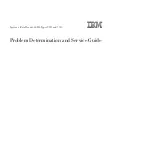
ERECA, 75 rue d'Orgemont, 95210 Saint Gratien, France T: +33 1 39 89 76 23
SR2 Installation Manual EN
Indice : C
06/01/2020
8 / 19
1.3.4 AES / MADI
Digital audio is available on true 75 Ohms BNC sockets.
The total capacity of the Stage Racer 2 is 4 simultaneous bidirectional AES signals. Thru the web server, the
AES 3 and 4 can be disabled to allow for MADI.
Caution: Avoid connecting 50 ohms plugs it will damage the socket central pin causing costly repair especially
if this one is on the lower part of the connector side.
1.3.4.1 Bidirectional AES
Each AES port is internally equipped with a 2-4 wire converter connected to transmit a fully bidirectional path to
any distant AES port of the Stage Racer 2 network. It appears in the AES audio grid of the network.
This allow to interconnect talkback panels working in a bidirectional manner on one 75 Ohms coax. The ports
still can be used without configuration to transport unidirectional signal, no setup needed for channel direction.
Note1: For the internal 2-4 wire converter correct behavior the source/terminal impedance of the machine
connected to the AES ports must be 75 Ohms.
Note2: The bidirectional function of the device constraint the design specially to provide an accurate AES
activity led display and avoid signal loop if port impedance is not 75 ohms. The internal FPGA seeks for AES3
audio XYZ preamble at 48KHz to light the corresponding AES Led and enable transmission in this direction.
1.3.4.2 MADI
When selected through the web server, MADI can be transmitted and port 3 become MADI input and port 4
become MADI output.
Stage racer 2 offers 2 principles for MADI transmission described below.
Cf. technical manual for more precisions
1.3.5 AoIP DANTE / AES-67
The AoIP board Dante / AES-67 is an optional hardware module provided by Ereca, which provides 64
channels in and out.
To quickly check if you unit is equipped with it, connect to the
web server
, go “Graph”, “Tree view” on the left, select the
“SR2 node”, then “Dante”.
You should see “Dante-IN & OUT BRKLYN-II”.
Cf. technical manual for more precisions
1.3.6 SDI Embedding / De-Embedding.
Cf. technical manual for more precisions

































